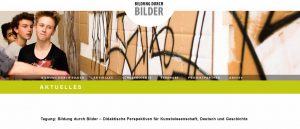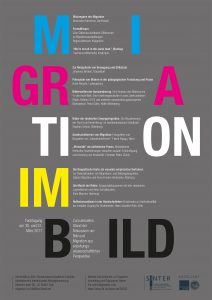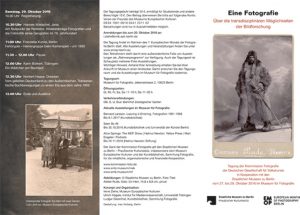Bilder im Konflikt: Fotografische und filmische Bilder von Krisen- und Konfliktsituationen verändern sich in Ästhetik und Gebrauchsweisen – und geraten damit selbst ins Visier. Zum einen haben sich im Zuge der digitalen Entwicklungen die Bildproduzent*innen und Distributionskanäle von Bildern vervielfältigt. Das erweitert Perspektiven und ermöglicht neue Erzählformen. Zum anderen geht damit eine Erschütterung des klassischen bildjournalistischen Selbstverständnisses einher. Die Konkurrenz der visuellen Strategien sucht das Affektpotential der Bilder zu steigern. Zugleich wird hinterfragt, inwieweit Fotografien noch als Zeugnisse wirken können. Sie bewegen sich im Spannungsfeld von Wahrheitsansprüchen zwischen Authentizität, Objektivität und Propaganda. Ihre Kontextualisierungen und Rahmungen stellen Bedeutungen her – und erfordern Reflexion.
[...]
Quelle: https://www.visual-history.de/2017/05/16/symposium-images-in-conflict/



![Muzeum Fotoateliér Seidel, Český Krumlov Akteure und Institutionen visueller Medien im [deutsch-]tschechischen Kontext](https://www.visual-history.de/wp-content/uploads/2017/04/Muzeum-Fotoateli%C3%A9r-Seidel-%C4%8Cesk%C3%BD-Krumlov-300x209.jpg)





